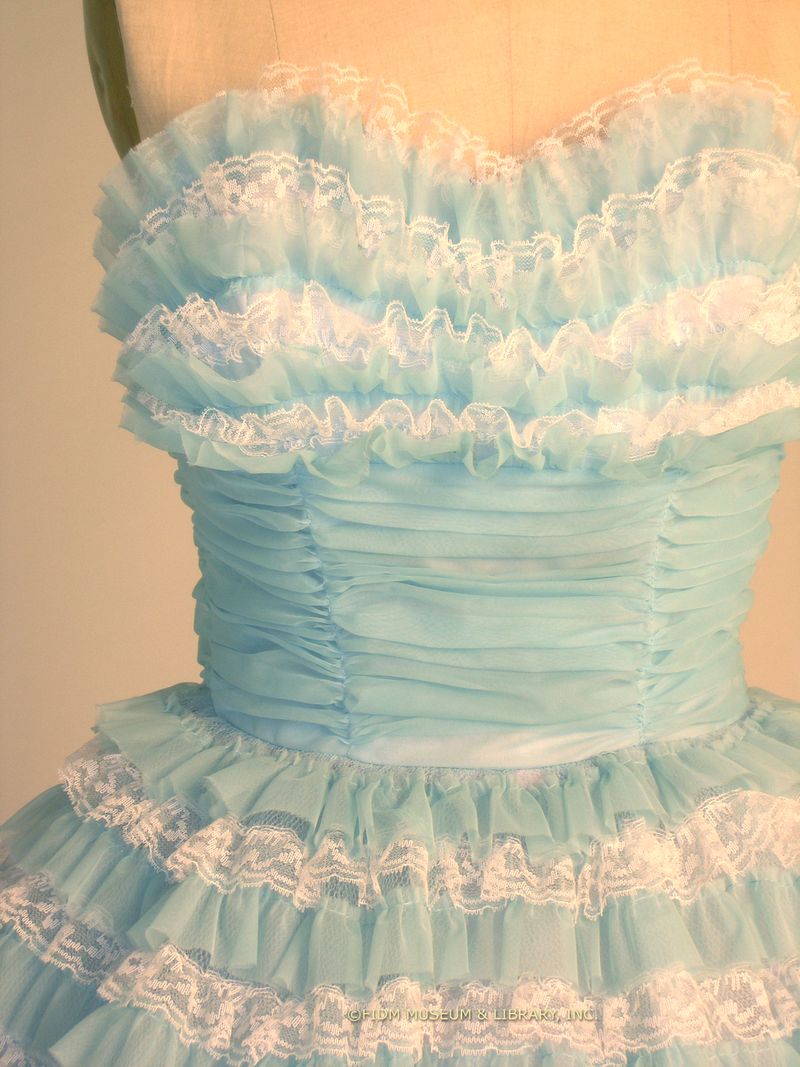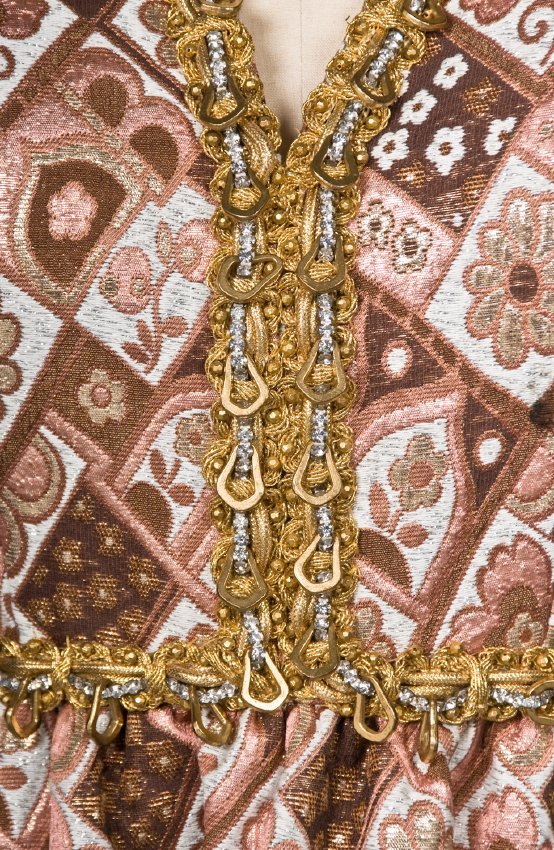Oscar dressing
In the early years of the Academy Awards, celebrities didn't always dress themselves in the latest glamorous fashions. In 1935, Claudette Colbert wore a simple traveling suit to accept the Best Actress Award for It Happened One Night. Colbert didn't expect to win, so was already on-board a New York bound train as the ceremony began. The train was held at the station and Colbert was rushed to the ceremony to accept her award. That same year, Bette Davis wore an "afternoon frock" to the Academy Awards and was criticized by the press and studio executives for her lack of glamour. During the early 1940s, Ingrid Bergman proudly wore the same black dress to the Academy Awards two years in a row! In 1953, the Academy Awards were broadcast on television for the first time. Though the Academy Awards had previously been covered in radio broadcasts, film shorts and print media, televising the show nationwide allowed all interested parties to see "the great and near great of the movie colony, wrapped in rented ermine, alighting from limousines."1 For the 1953 broadcast, female attendees were reportedly asked to keep their cleavage under wraps. By the late 1950s, however, a strapless evening gown would have been in perfect taste.
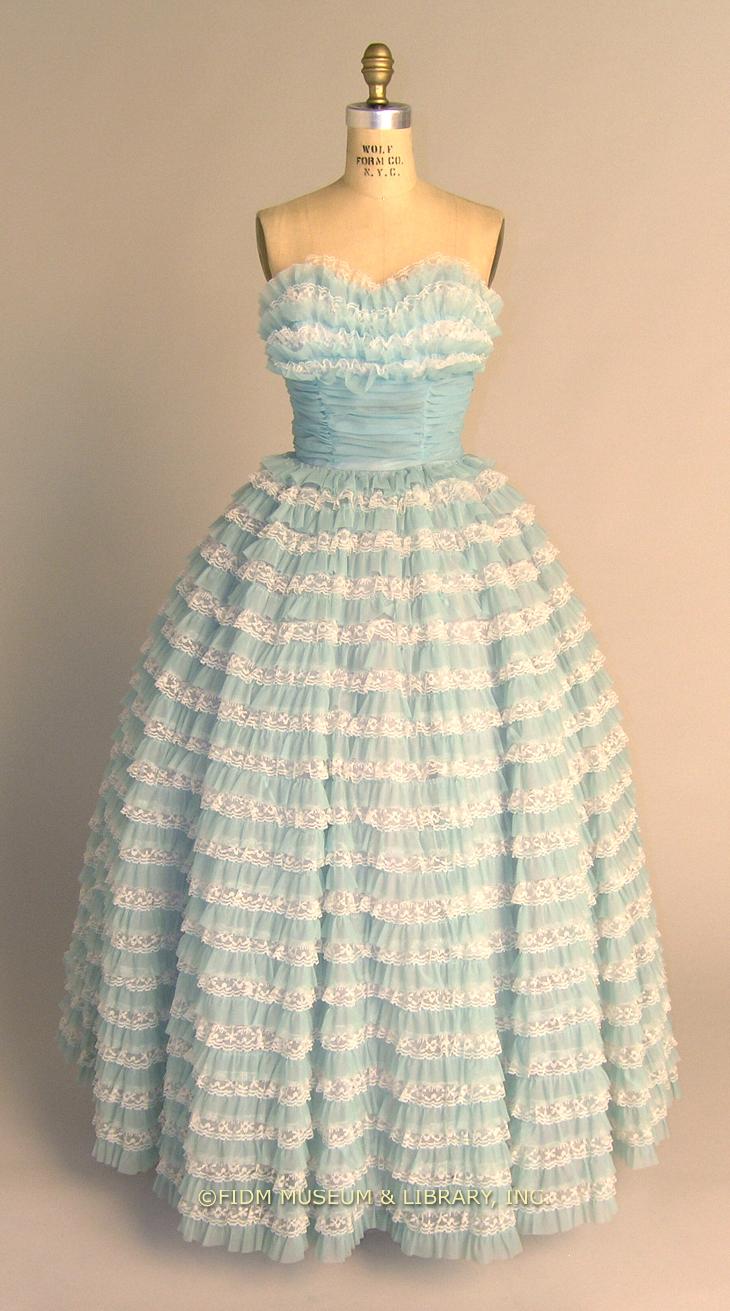 Evening gown 1958 Gift of Nancy Abernathy 2003.787.1
Evening gown 1958 Gift of Nancy Abernathy 2003.787.1
During the 1960s, coverage of the Academy Awards demonstrated an increasing interest in the clothing worn by attendees, while also detailing the loosening of dress codes seen throughout society. In 1968, female attendees of the Academy Awards were forbidden to wear mini dresses or skirts. Participants still managed to make an impression, including Carol Channing (who wore a slinky silver sheath dress) and Phyllis Diller, who wore a "chinchilla stole trimmed in shocking pink ostrich feathers over a platinum gown."2 By 1970, coverage of the Academy Awards featured prominent commentary on the process of choosing an appropriate ensemble, hairstyle and accessories. For the 1970 Academy Awards, women were instructed to wear long gowns, while men were requested to wear tuxedos. A 1970 article from the Los Angeles Times indicated that a number of attendees planned to wear Oscar de la Renta maxi-gowns.
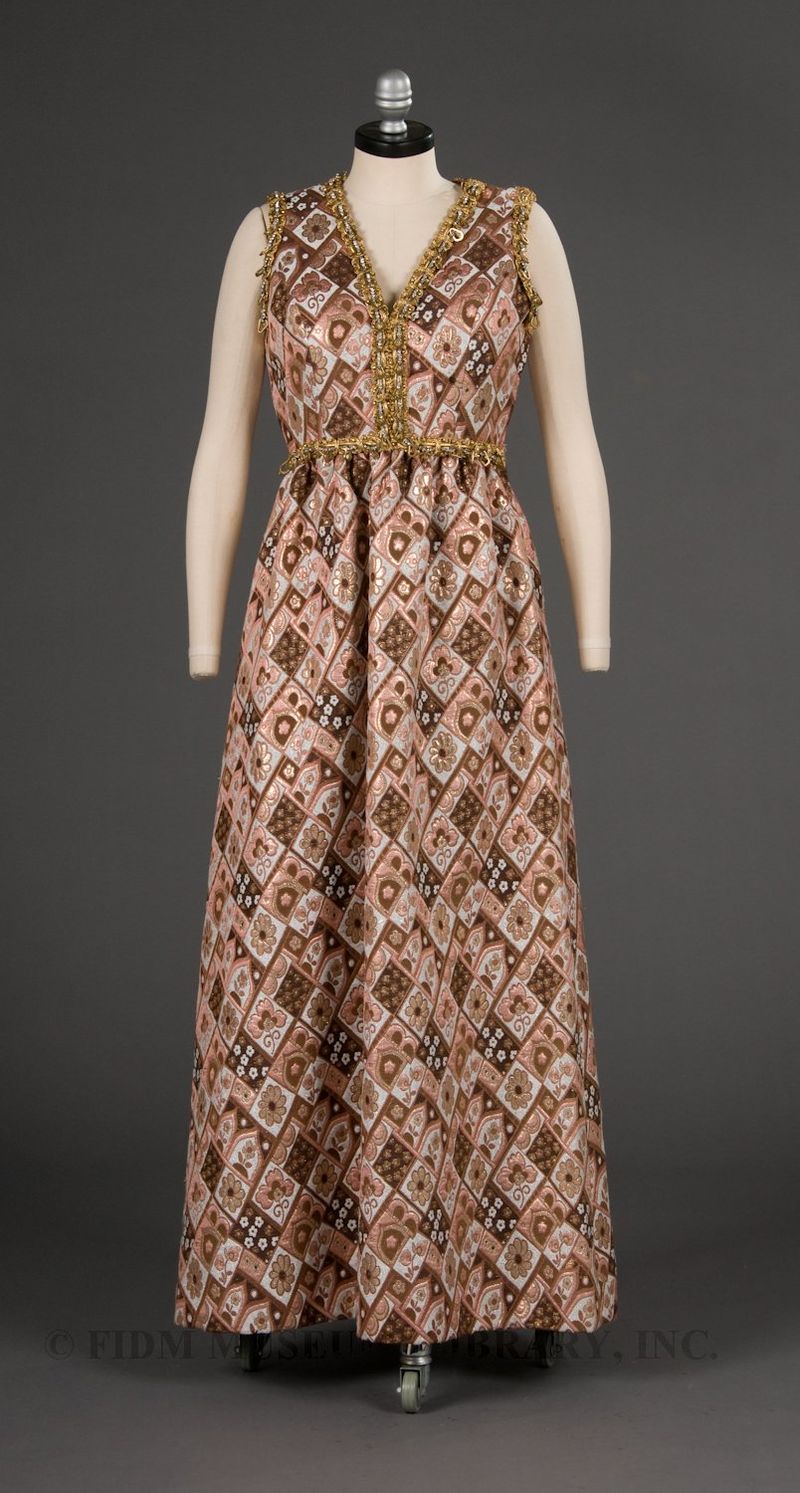 Evening gown Oscar de la Renta c. 1970 Gift of Molly Frederick 2008.935.2
Evening gown Oscar de la Renta c. 1970 Gift of Molly Frederick 2008.935.2
During the 1980s, the glitz factor at the Academy Awards increased exponentially with the popularity of heavily embellished evening gowns. By the late 1990s, the idea of awards ceremonies as a glamorous showcase for celebrities and designers was solidified in the public imagination. Articles detailing the intricate relationship between celebrities, designers and stylists in the run-up to the Academy Awards were widespread. Given that the average viewer ship of the Academy Awards in the mid-1990s was about 1 billion, it makes sense that designers would be eager to clothe celebrities in their latest creations. This trend has continued and increased in recent years. Since the 1990s, vintage fashions have also made regular appearances on the red carpet runway. Even new styles sometimes resemble fashions of the past. This late 1960s dress is indicative of its era, but could also mingle comfortable with more recent red carpet fashions. If you're still craving more coverage of last night's Academy Award red carpet, click here.
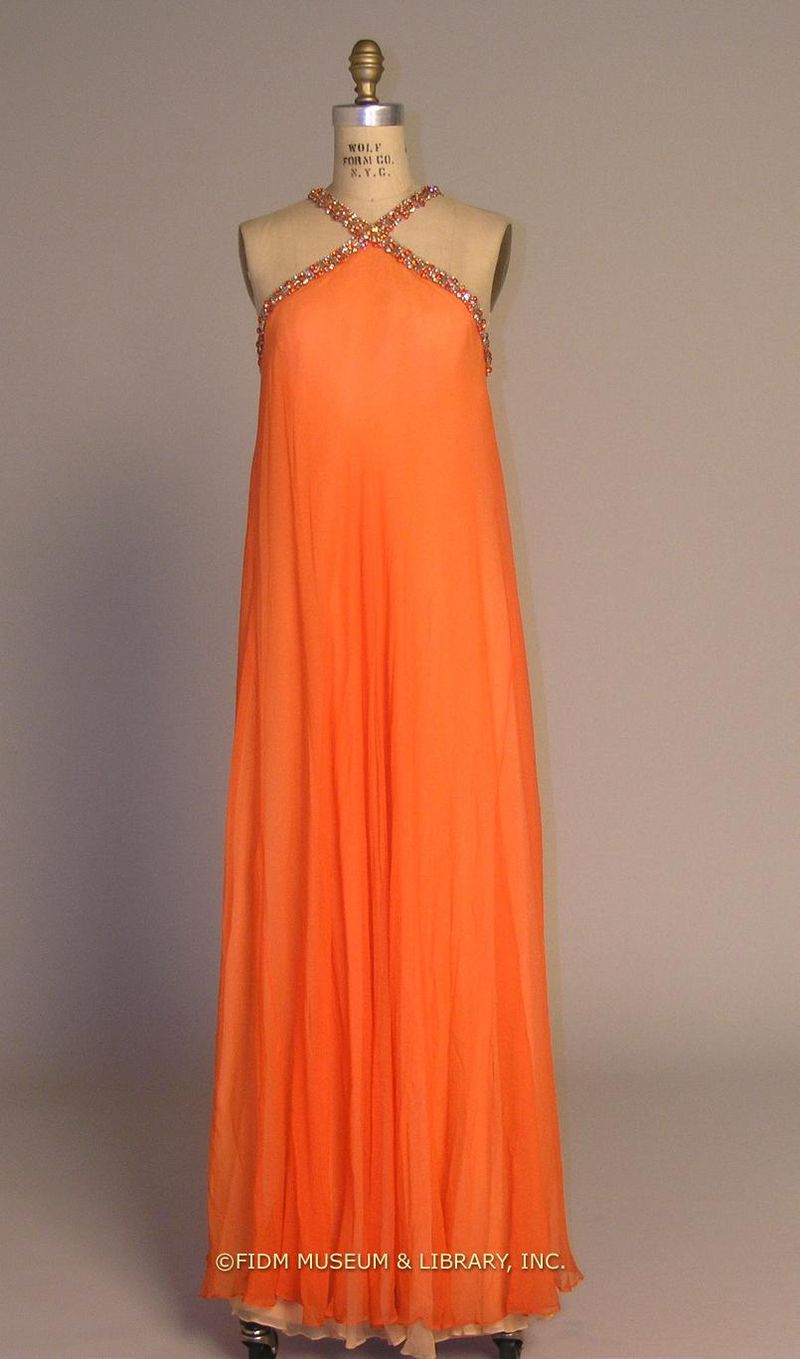 Evening gown c. 1968 Gift on Anonymous Donor 2003.40.47
Evening gown c. 1968 Gift on Anonymous Donor 2003.40.47
1 Pryor, Thomas M. "Hollywood Canvas." New York Times 15 Feb. 1953: X5. 2 Thomas, Kevin. "More Stars, Many Surprises." Los Angeles Times 11 Apr. 1968: 3.
